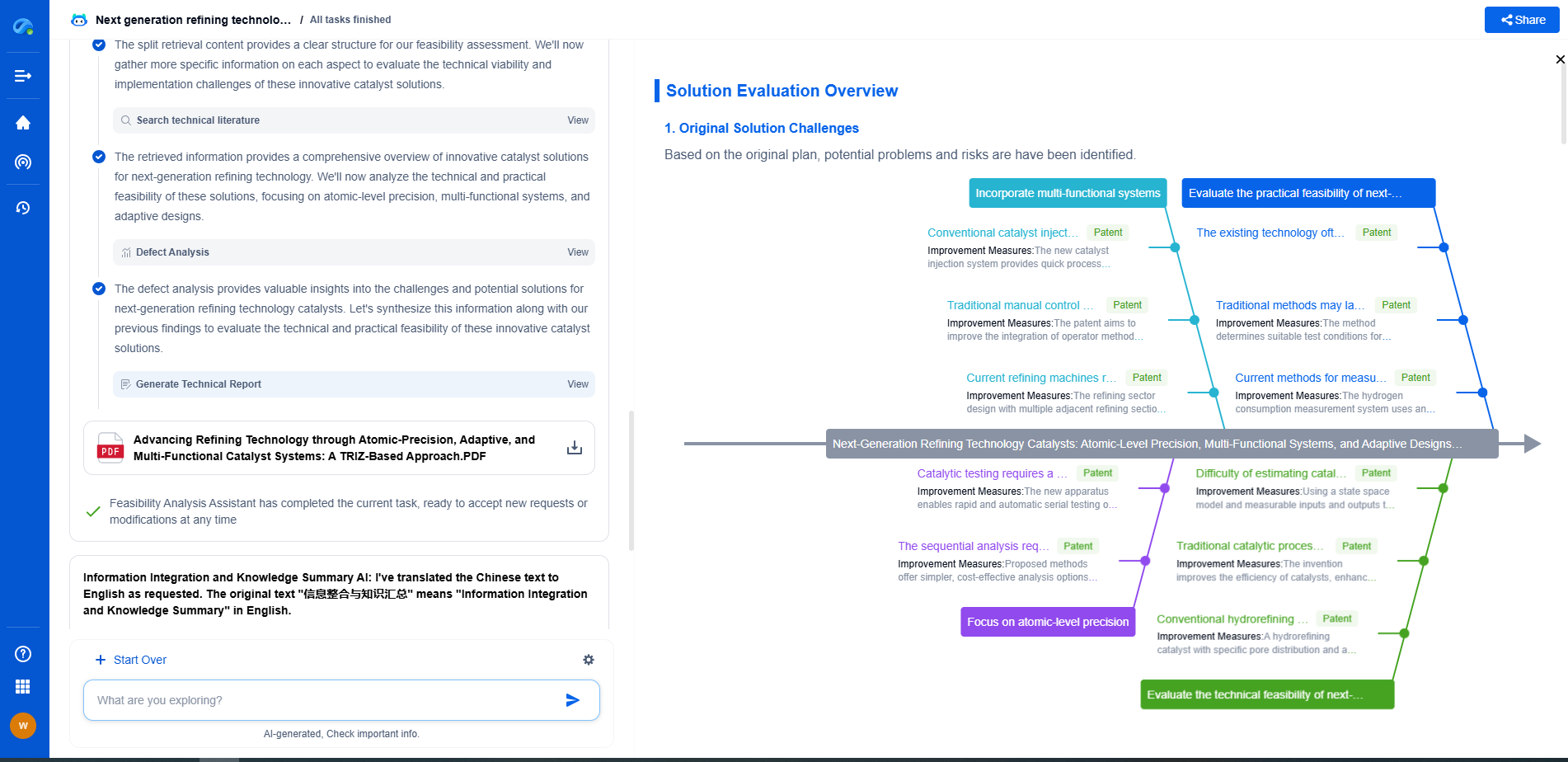Hall Effect Sensing: Non-Invasive Current Measurement in Power Electronics
JUL 9, 2025 |
In the world of power electronics, accurate current measurement is vital for monitoring, control, and protection of electrical systems. Traditional methods of measuring current often require intrusive techniques, involving disconnection or breaking of the circuit, which can be cumbersome and risky. Enter Hall Effect sensing—a non-invasive alternative that has gained popularity for its ability to measure current without direct electrical contact with the conductor.
**Understanding the Hall Effect**
The Hall Effect, named after physicist Edwin Hall, is a fundamental principle where a voltage difference is induced across an electrical conductor when it is placed in a magnetic field perpendicular to the flow of current. This effect forms the basis of Hall Effect sensors, which are used to detect the magnitude of the magnetic field and, consequently, the current flowing through the conductor.
**Advantages of Hall Effect Sensors**
One of the primary advantages of Hall Effect sensors is their non-invasive nature. This means there is no need to cut wires or integrate the sensor directly into the circuit. Instead, they can measure current from outside the conductor by detecting the magnetic field around it. This feature makes them highly desirable for applications where circuit integrity must be maintained.
Additionally, Hall Effect sensors provide electrical isolation between the measured current source and the measurement electronics. This isolation is crucial for safety and for protecting sensitive measuring equipment from high voltages.
Hall Effect sensors also offer wide bandwidth, allowing them to measure both AC and DC currents. This versatility makes them suitable for diverse applications, from consumer electronics to industrial power systems.
**Applications in Power Electronics**
In power electronics, Hall Effect sensors are instrumental in a variety of applications. They are commonly used for current sensing in motor drives, inverters, and power supplies. Their ability to accurately monitor current helps in optimizing the efficiency and performance of these systems.
In electric vehicles, Hall Effect sensors contribute to managing battery consumption, ensuring longer life and better performance of the vehicle. They are also used in renewable energy systems, such as solar panels and wind turbines, to monitor the output and ensure maximum energy efficiency.
**Challenges and Considerations**
Despite their advantages, Hall Effect sensors are not without challenges. They are susceptible to external magnetic fields, which can introduce errors in measurement. This issue can be mitigated by careful design and placement of the sensor, or by using shielding techniques.
Temperature sensitivity is another consideration, as changes in temperature can affect the accuracy of the sensor. Manufacturers often compensate for temperature variations through calibration and the use of temperature-stable materials.
**Future Prospects and Developments**
The future of Hall Effect sensing in power electronics looks promising, with ongoing developments focusing on enhancing sensitivity, accuracy, and integration with digital systems. Advances in semiconductor technology are paving the way for more compact and efficient sensors, suitable for a wider range of applications.
Moreover, the integration of Hall Effect sensors with wireless communication systems is an area of active research. This integration could lead to smarter, more efficient power management systems that are better suited to the needs of an increasingly interconnected world.
**Conclusion**
Hall Effect sensors represent a significant advancement in the field of current measurement, offering a non-invasive, versatile, and efficient solution for power electronics. As technology continues to evolve, these sensors are expected to become even more integral to current measurement, further driving innovation and efficiency in electrical systems. Embracing the capabilities of Hall Effect sensing can lead to safer, more reliable, and more efficient power management across various industries.
Navigating the evolving world of electrical measurement—from high-precision signal integrity to advanced test protocols like BERT or TDR—demands more than just expertise; it demands smart tools.
Patsnap Eureka empowers you to keep up—by turning complex patent data, technical parameters, and industry signals into actionable insight. It’s your AI partner for exploring what’s next in test, measurement, and electrical diagnostics.
💡 Try Patsnap Eureka for free and see how it transforms the way you work with electrical measurement technologies.
- R&D
- Intellectual Property
- Life Sciences
- Materials
- Tech Scout
- Unparalleled Data Quality
- Higher Quality Content
- 60% Fewer Hallucinations
Browse by: Latest US Patents, China's latest patents, Technical Efficacy Thesaurus, Application Domain, Technology Topic, Popular Technical Reports.
© 2025 PatSnap. All rights reserved.Legal|Privacy policy|Modern Slavery Act Transparency Statement|Sitemap|About US| Contact US: help@patsnap.com

